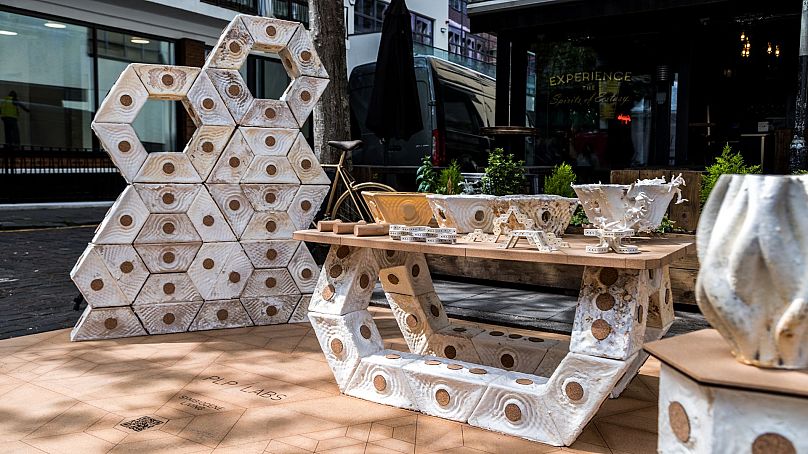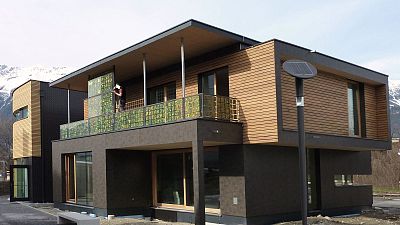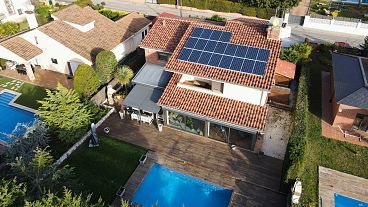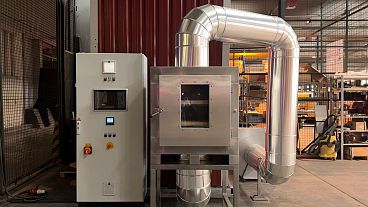Architects have created Lego-like bricks of fungi that could slash construction’s carbon footprint.
Cars, planes and plastics are some of the most well-known sources of pollution. But there’s another source of destructive emissions literally built into our society: construction.
Almost 40 per cent of annual global CO2 emissions are attributed to the built environment, according to the International Energy Agency (IEA). Of these, 11 per cent are a result of manufacturing building materials such as steel, cement and glass.
Architects and scientists are working on ways to reduce the climate impact of these important materials. But low-carbon alternatives are needed to build a greener future.
One material that’s showing real promise in the world of construction is fungus.
Here’s how this spore-producing organism could help decarbonise our homes and cities.
How can fungi be used in construction?
The use of mycelium - the root-like network of fungal threads that grows beneath mushrooms - as a construction material isn’t a totally new concept.
Mycelium has been used to make sustainable packaging since 2007. And back in 2014, an exhibition at New York’s Museum of Modern Art showcased an architectural installation made from agricultural waste and mycelium.
When packed into a mould together, the fast-growing fungi feed on the waste, and the organic bricks grow solid.
Since then, various architects have been exploring the potential of this intriguing material - including how to leverage it as a living, self-healing and compostable building material.
Earlier this year, NASA even teamed up with architects in the US to explore the potential of building new bio-habitats - homes made from living organisms, like mushrooms - in space.
Could fungi be the building material of the future?
Last month, London-based research and design collaborative PLP Labs showcased modular building blocks grown from mycelium at Clerkenwell Design Week. These are made using 3D-printed wooden shells to create unique structures.
“In mycelium, you can make any shape you like,” says co-founder Ron Bakker. “But we felt it was important to make objects that could be… built up in different ways, taken apart, put back together in other ways, almost a little bit like Lego blocks.
“Because that's one of the aspects of future architecture is to make demountable buildings.”
Products containing mycelium are not only renewable and biodegradable, but are also lightweight, excellent at insulating and have high resistance to fire.
“We could use mycelium to make construction materials, to make cladding panels, to make acoustic absorption, to make light fixtures, to make elements that are basically made from waste and from nature and that never leave… waste in nature,” Ron continues.
The team is now investigating how to grow the mycelium into stronger structures that can support weight in the same way as bricks. They are also exploring the possibility of ‘grow at home’ kits that could be used to create custom structures.
These are all key steps towards turning fungi into the homes of the future.
“Mycelium has so much quality that we normally look for in materials that are mined, made out of mineral rocks or made out of fossil fuel, all the foams we know,” says Ron.
“Most of these have a big penalty to the environment. And mycelium does not.”
This combined with its favourable physical properties make it “a real material for the future,” believes Ron.
What is the environmental impact of concrete?
Concrete is the second most consumed material on the planet after water - and its environmental fallout is huge. Producing it is a highly polluting, energy and water-intensive process.
Cement production generates around 2.5 billion tonnes of carbon dioxide (CO2) per year, or about 8 per cent of the global total, according to the UK’s Science Museum.
Additionally, it produces harmful air pollutants including sulphur dioxide, nitrogen oxides and carbon monoxide.
Concrete is also exhausting the world’s sand supplies, which are often mined from rivers as desert sand is the wrong shape.
Scientists are experimenting with new materials and methods for making concrete that could reduce its environmental impact.
This includes developing ways to use waste materials - such as ash and recycled plastic - and natural fibres to reduce concrete’s strain on finite resources and enhance its performance.
They have also explored injecting captured CO2 into concrete, where it can be stored safely out of the Earth’s atmosphere.
Advancements like these, along with the innovative use of materials like fungi, could help us build a better future.




